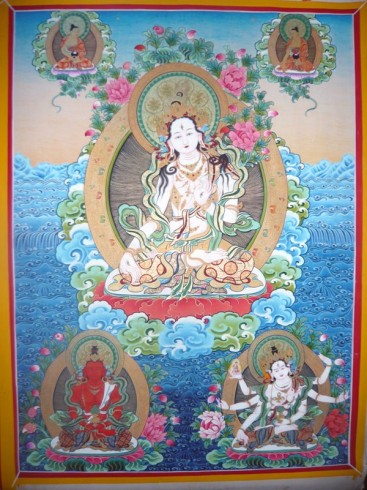Search results for gheranda samhita (6)
SHIVA-SAMHITA
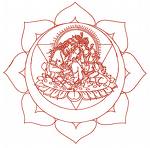
Nach Hatha-Yoga-Pradipika und Gheranda-Samhita zählt die Shiva-Samhita („Shivas Sammlung“) zu den wichtigsten Hatha-Yoga-Handbüchern. Sie beinhaltet 645 – Strophe in fünf Kapiteln hat deshalb besonderen Wert, da sie philosophischen Fragen ausführlich Rechnung trägt. Ihre Entstehungszeit ist unbekannt, doch scheint sie ein Werk des späten 17. oder frühen 18. Jahrhunderts zu sein.
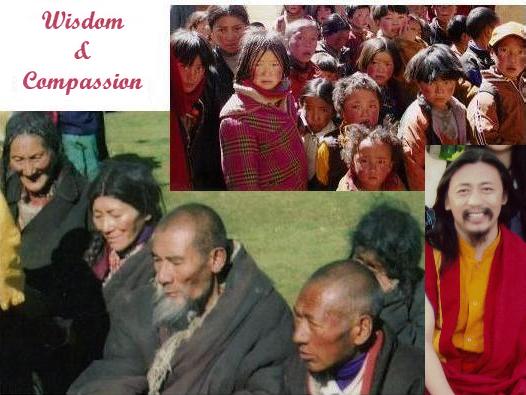
Freedom of Religion & Belief – China: Tibetan Monasteries Placed Under Direct Rule
Tibetan Yoga Center – Yoga Retreats
Contact: tibetanyogainfo@gmail.com
www.bhutanzopa.com.bt/AdventureTravel
The practice of Yoga is intimately connected to the religious beliefs and practices of both Buddhism and Hinduism. However there are distinct variations in the usage of yoga terminology in the two religions. In Hinduism, the term „Yoga“ commonly refers to the eight limbs of yoga as defined in the Yoga Sutras of Patanjali, written some time after 100 BCE, and means „yoke“, with the idea that one’s individual atman, or soul, would yoke or bind with the monistic entity which underlies everything (brahman). In the Vajrayana Buddhism of Tibet, however, the term „Yoga“ is simply used to refer to any type of spiritual practice; from the various types of tantra (like Kriyayoga or Charyayoga) to ‚Deity yoga‘ and ‚guru yoga‘. In the early translation phase of the Sutrayana and Tantrayana from India, China and other regions to Tibet, along with the practice lineages of sadhana, codified in the Nyingmapa canon, the most subtle ‚conveyance‘ (Sanskrit: yana) is Adi Yoga (Sanskrit). A contemporary scholar with a focus on Tibetan Buddhism, Robert Thurman writes that Patanjali was influenced by the success of the Buddhist monastic system to formulate his own matrix for the version of thought he considered orthodox. Read More: HERE
Early Buddhism incorporated meditative absorption states. The most ancient sustained expression of yogic ideas is found in the early sermons of the Buddha. One key innovative teaching of the Buddha was that meditative absorption must be combined with liberating cognition. The difference between the Buddha’s teaching and the yoga presented in early Brahminic texts is striking. Meditative states alone are not an end, for according to the Buddha, even the highest meditative state is not liberating. Instead of attaining a complete cessation of thought, some sort of mental activity must take place: a liberating cognition, based on the practice of mindful awareness. The Buddha also departed from earlier yogic thought in discarding the early Brahminic notion of liberation at death. Liberation for the Brahminic yogin was thought to be the realization at death of a nondual meditative state anticipated in life. In fact, old Brahminic metaphors for the liberation at death of the yogic adept were given a new meaning by the Buddha; their point of reference became the sage who is liberated in life. Read More: HERE
Dream Yoga or Milam (T:rmi-lam or nyilam; S:svapnadarśana)— the Yoga of the Dream State are a suite of advanced tantric sadhana of the entwined Mantrayana lineages of Dzogchen (Nyingmapa, Ngagpa, Mahasiddha, Kagyu and Bönpo). Dream Yoga are tantric processes and techniques within the trance Bardos of Dream and Sleep (Tibetan: mi-lam bardo) and are advanced practices of Yoga Nidra. Aspects of Dream Yoga sadhana are subsumed within the practice suite of the Six Yogas of Naropa. Read More: > HERE <
Tibetan yoga center was established to provide a program of study and practice in the Tibetan Buddhist (Vajrayana) tradition that would integrate the essence of these teachings and present them in a suitable way for practitioners in the West. The program combines the core practices relying on visualizations, yoga of channels, winds and drops, and insight into the nature of the mind (rigpa) for efficient progress on the path. The core teachings of Tibetan Yoga Center are ‚The yogas of the six bardos‘ of the Nyingma lineage of Tibetan Buddhism, summarized in the curriculum as seven courses (see the program section). The founder and master teacher of the center, Khenchen Lama Rinpoche, was at numerous occasions encouraged by his teachers to focus on helping Western students, particularly through these practices. To help bring these teachings closer to the background of Western practitioners, the program of the Tibetan Yoga Center also integrates elements of Western neuroscientific research on changes in behavior, mind and brain as a result of meditation. Building on the tradition of enlightened householder yogis in Tibet, the program of the center was developed for yogis of the current era – serious practitioners leading busy lives with work and family commitments who want to bring their spiritual practice to swift fruition to fully benefit sentient beings.
Tibetan Yoga Center operates on principles of a social business, offering teachings mostly by suggested donation and for minimal possible fees to cover expenses. The aim of the Tibetan yoga of mind is to develop universal loving kindness and compassion coupled with the ultimate wisdom of the nature of phenomena, the ultimate truth. At the basic level of achievement, one wishes happiness for oneself as well as other people.
At the medium level of achievement one realizes that the source of ultimate happiness is the understanding of the true nature of phenomena. One realizes that the most profound way to benefit sentient beings is to achieve enlightenment and works very hard towards this goal. On this path, one completely purifies his/her mental afflictions – anger, attachment, ignorance, jealousy and pride. The highest level of achievement in the Tibetan yoga of mind is the experiential understanding of our own Buddha nature – the deepest level of the mind. When one continuously sustains this realization in his/her mind stream, s/he becomes the embodiment of the union of primordial wisdom and compassion, and benefits sentient beings in limitless ways. This achievement is the essence of the Tibetan yoga and the deepest meaning of the term ’naljor‘.
TYPES OF YOGA IN TIBETAN BUDDHISM – There are six yanas (modes of spiritual practice) in Vajrayana: 1. Kriyayana, 2. Upayana, 3. Yogayana, 4. Mahayoga, 5. Anuyoga, and 6. Atiyoga. In Nyingma lineage, the main focus of practice is on Mahayoga, Anuyoga and Atiyoga.
Teaching and Practice Downloads: This section contains general teachings given by teachers of the Tibetan Yoga Center at various occasions as well as specific teachings that are part of the curriculum of the center. These teachings are available for free, but proper reference to the teachings if used as part of other materials should be included.
Previous some related #articles #videos:
Mountain Minorities and Indigenous Peoples
Yoga of Himalayas – Nuns & Communities
The Ninth Mandaean Camp Niagara Falls
UNESCO – The Tradition of Vedic Chanting
UN – Nagoya biopiracy agreement ‚is unexpected success‘
Saving the Bedouin Heritage and Biodiversity
A Call for Renewable Energy in Brazil – Belo Monte
Indigenous Australien Medicine – Bush Medicine
Build Hope – Sivananda Sevashram
ARGAN TREE – Argan Oil Morocco
Jain Tradition – Mahavir Jayanti India
Monasteries Environmental Himalayaprotection
Monks lead march to save Himalayas
Interfaith Center: Gala Dinner with Yusuf Islam
Gilgit (UNESCO Gilgit Manuscripts) Baltistan – National Conference Sufism
Bahá’í – Religion für eine neue Zeit
Introduction – Swami Vivekananda – Jnana Yoga
The Hindu approach to spiritual evolution leading to liberation or moksha or Self-realization is one of the four major paths or yogas:
-
the path of knowledge or Jnana yoga,
-
the path of mind control or Raja Yoga ,
-
the path of devotion of Bhakti yoga and
-
the path of action/work or Karma yoga.
#video Swami Vivekananda 1893 Speech at Parliament of Religions Part 1 of 4
Swami Vivekananda was the chief disciple of the 19th century saint Ramakrishna Paramahansa and the founder of the Ramakrishna Math and the Ramakrishna Mission. He is considered a key figure in the introduction of Indian philosophies of Vedanta and Yoga to the „Western“ world, mainly in America and Europe and is also credited with raising interfaith awareness, bringing Hinduism to the status of a major world religion during the end of the 19th century CE. Vivekananda is considered to be a major force in the revival of Hinduism in modern India.
He is perhaps best known for his inspiring speech which began: „Sisters and Brothers of America,“ through which he introduced Hinduism at the Parliament of the World’s Religions in Chicago in 1893.
The Council for a Parliament of the World’s Religions works to cultivate harmony among the world’s religious and spiritual communities to achieve a just, peaceful and sustainable world.
The first Parliament of Religions was held at the 1893 Chicago Columbian Exposition, and was the first formal meeting of the religious East and West. In 1988 the Council for a Parliament of the World’s Religions (CPWR) was founded to organize a centennial celebration of the original Parliament. Since 1993, three Parliaments have been held in Chicago, Cape Town, Barcelona and in 2009 the most recent Parliament was held in Melbourne, Australia.
Dr. Joachim Reinelt: Zur Zeit des indischen Mittelalters wanderten in weiten Teilen Indiens und Tibets tantrische Mystiker umher, die Nathas, Nathayogis oder Nathasiddhas genannt wurden. Sie praktizierten und lehrten Hatha- und Kundaliniyoga und hatten großen Einfluss auf das religiöse Leben der Menschen.
Gorakshanatha Saivism: Gorakhnath or Gorakshanatha Saivism is also known as Siddha Siddhanta and Nath tradition. It was founded by Gorakshanatha (Gorakhnath) who lived about 10th century AD. He is believed to be 3rd, 4th or 5th in a line of 12 prominent teachers of this tradition, which has followers in both Buddhism and Hinduism.
He was said to be a disciple of Matsyendranatha who was from in Nepal. Followers of this sect believe that knowledge of this tradition was received by Matsyendranath directly from Siva himself. Gorakshanatha is credited with such works as Siddha Siddhanta Paddhathi and Viveka Martanda. He composed them in Hindi. He also created 12 monastic orders across Northern India in an effort to preserve the Adinatha tradition. Other important works of this tradition are Hathayoga Pradipika, Gheranda Samhita, Siva Samhita and Jnanamrita.
History of the Nathas – The history of ancient Indian sadhu texts reveals a succession of several main groups. There were the Sadhs, Yatis, Siddhas, Nathas, Pashupatis, Sant-Mats, Dasnamis and Nagas. Apart from these, many small sadhu sects have existed and played their part in the great stream of Indian life. In early history, it would appear that some sects were interwoven with others, and some merged or developed into other sects. Some thus became extinct, and others are still with us.
Full Article: http://www.saivism.net
http://www.facebook.com/parliamentofreligions
http://en.wikipedia.org/wiki/Swami_Vivekananda
Bhutan http://en.wikipedia.org/wiki/Gross_national_happiness
UN – The Challenge of Human Rights and Cultural Diversity
UNESCO – Intangible Cultural Heritage
UN – Nagoya biopiracy agreement ‚is unexpected success‘
http://www.twnside.org.sg/title2/books/The.Road.to.an.Anti-Biopiracy.Agreement.htm
Amnesty International – What are economic, social and cultural rights?
*************************************
China: Tibetan Monasteries Placed Under Direct Rule
(New York) – The Chinese government has ended a key policy of allowing Tibetan monasteries to be run by monks who comply with government regulations and have instead introduced a system that will place almost every monastery in Tibet under the direct rule of government officials who will be permanently stationed in each religious institution, Human Rights Watch said today.
The new system now requires an unelected „Management Committee“ – also referred to as zhusi danwei/gongzuozu („monastic government work-unit“)- to be established in every monastery, with up to 30 lay officials stationed in each monastery, depending on the size of the institution, according to a February 15, 2012 article in the government-run Global Times. The new „Management Committees“ will run the monasteries and will have authority over the previous „Democratic Management Committees,“ which will now be responsible for rituals and other matters.
The freedom to leave or discontinue membership in a religion or religious group —in religious terms called „apostasy“ —is also a fundamental part of religious freedom, covered by *Article 18 of the Universal Declaration of Human Rights.[2]
Freedom of religion is a principle that supports the freedom of an individual or community, in public or private, to manifest religion or belief in teaching, practice, worship, and observance; the concept is generally recognized also to include the freedom to change religion or not to follow any religion.[1]
#video Meeting with Special Rapporteur on Freedom of Religion or Belief, Heiner Bielefeldt As always saying something on the topic of freedom of religion or belief, to say it again, the most shocking experience when dealing with case of violations of freedom of religion is the extreme manifestation and degree of hatred “ http://www.youtube.com/watch?v=81qyyKzntJw
http://www.hreoc.gov.au/human_rights/religion/index.html
http://en.wikipedia.org/wiki/Freedom_of_religion
http://www.ohchr.org/EN/Issues/FreedomReligion/Pages/FreedomReligionIndex.aspx
February 29, 2012
Australian Broadcasting Corporation – Exiled PM wants ‚fact finding‘ mission in Tibet
March 3, 2012
UN Human Rights Chief asked when she would visit Tibet
Mar 6, 2012
UN calls on China to stop forced settlement of Tibetan Nomads
8 March 2012
“Unfinished progress” – UN expert examines food systems in emerging countries reports* on China, Mexico and South Africa to the Human Rights Council. In China, local-level authorities often have allowed land-grabbing at the expense of poor rural households. And between 50 and 80 per cent of the 2.25 million nomads on the Tibetan plateau may be relocated into settlements close to rural cities, overhauling the food and farming practices of this vulnerable community as part of a programme to abandon nomadic life and modernize agriculture. ( Latest Water UN Report – World Consumption of modern agriculture on fresh water by 70% )
chinadialogue Tibetan herders are struggling to adjust to sedentary life on the edge of the city of Golmud. Xia Liwei visited one family and listened to their story. http://www.chinadialogue.net/–Who-are-these-people-now
chinadialogue As China seeks to protect a delicate corner of Qinghai, 50,000 herders have been moved off the grasslands. Ill-prepared for urban life, they face a bleak future, write Guan Guixia and Suonan Wangjie. http://www.chinadialogue.net/–Hard-times-for-eco-migrants
TIBETAN NOMADS Tibetan herder with a yak Nomadic herders are known as drokpa. They make up about 25 percent of Tibetans in Tibet. In some Tibetan counties they make up 90 percent of the population. http://factsanddetails.com/china.tibetan nomads
Natha Yogis, Gorakshanath & Kashmir Shaivism
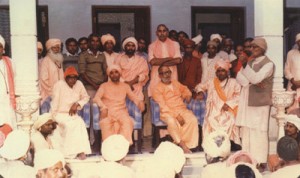
Mela 1985: babaji ( sitting on extreme right), Shri Avaidya nath ji, Shri Chand nath ji
Kundalini Books: Siddha-Siddhantapaddhati of Goraksanatha
Gorakshanath the Originar of Hatha-Yoga
The Sanskrit word nÄ�thá or नाथ, is the proper name of a siddha sampradaya (initiatory tradition) and the word itself literally means „lord, protector, refuge“. The related Sanskrit term Adi Natha means first or original Lord, and is therefore a synonym for Shiva, Mahadeva, or Maheshvara, and beyond these supramental concepts, the Supreme Absolute Reality as the basis supporting all aspects and manifestations of consciousness. The Nath tradition is a heterodox siddha tradition containing many sub-sects. It was founded by Matsyendranath and further developed by Gorakshanath. These two individuals are also revered in Tibetan Buddhism as Mahasiddhas (great adepts) and are credited with great powers and perfected spiritual attainment. Read More: > Here <
Dr. Joachim Reinelt: Zur Zeit des indischen Mittelalters wanderten in weiten Teilen Indiens und Tibets tantrische Mystiker umher, die Nathas, Nathayogis oder Nathasiddhas genannt wurden. Sie praktizierten und lehrten Hatha- und Kundaliniyoga und hatten großen Einfluss auf das religiöse Leben der Menschen.
In meiner Doktorarbeit habe ich die Lehren und Praktiken dieser Yogis untersucht. Als Textgrundlage dient hierbei ein Werk aus dem ca. 13. Jahrhundert, das Vivekadarpana, wörtlich ‚Spiegel der unterscheidenden Betrachtung‘. In diesem recht umfangreichen Werk (21 Kapitel) wurden die Lehren aus unterschiedlichen philosophischen Schulen, Konzepte und Praktiken diverser tantrischer und yogischer Traditionen, sowie viele mythologische Vorstellungen zusammengetragen. www.proyoga.de
Gorakshanatha Saivism: Gorakhnath or Gorakshanatha Saivism is also known as Siddha Siddhanta and Nath tradition. It was founded by Gorakshanatha (Gorakhnath) who lived about 10th century AD. He is believed to be 3rd, 4th or 5th in a line of 12 prominent teachers of this tradition, which has followers in both Buddhism and Hinduism.
He was said to be a disciple of Matsyendranatha who was from in Nepal. Followers of this sect believe that knowledge of this tradition was received by Matsyendranath directly from Siva himself. Gorakshanatha is credited with such works as Siddha Siddhanta Paddhathi and Viveka Martanda. He composed them in Hindi. He also created 12 monastic orders across Northern India in an effort to preserve the Adinatha tradition. Other important works of this tradition are Hathayoga Pradipika, Gheranda Samhita, Siva Samhita and Jnanamrita. Full Article: www.saivism.net
History of the Nathas – The history of ancient Indian sadhu texts reveals a succession of several main groups. There were the Sadhs, Yatis, Siddhas, Nathas, Pashupatis, Sant-Mats, Dasnamis and Nagas. Apart from these, many small sadhu sects have existed and played their part in the great stream of Indian life. In early history, it would appear that some sects were interwoven with others, and some merged or developed into other sects. Some thus became extinct, and others are still with us.
Full Article : http://www.mahendranath.org/yogavidya/yogavidya.html
Address inquiries to:
INTERNATIONAL NATH ORDER
3005 S. Lamar Blvd. D109-387
Austin, TX 78704 (USA)
Yogendranath Yogi Event: „CHATUHSASTHI YOGINI MANTRA -64 KALI YOGINIS“: “Sixty and four are the instruments of enjoyments that tempt the individual soul (jiva). Sixty and four are the divisions (kalas) within jiva; Sixty and four are the chambers of jiva’s chakras; Sixty and four; where Shiva-Shakti are.” In very ancient days, eight great Female Goddesses Shaktis emerged from the cosmic soul of the Principle Dieties and formed Kali Durga, the Universal Shakti Power, These were the grand Mothers (Ashta Matrikas) of all subsequent Yoginis. According to Kaula Tantra, the seight manifested each in turn into eight Divine Shaktis, thus resulting in the 64 Tantric Yoginis.
- Start Time:Sunday, April 10, 2011 at 2:30am
- End Time: Friday, April 10, 2015 at 5:30am
- This is an open event. Anyone can join and invite others to join.
Eight Great Mothers (Ashta Matrikas), Halebid, Karnataka – An examination of the ancient Tantric tradition reveals a particular sanctity assigned to the number eight. The eight mother faculties (tattvas) of the manifested universe, the eight directions with four cardinal and four intermediate points (digbandahs), the eight miraculous yogic powers (siddhis), eight „limbs“ of Yoga (astanga) eight forms of the Divine Mother (matrikas) and eight primary mystic symbols (mudras) are just a few examples. The square of eight, or sixty-four, occupies an even more profound position in the field of Tantra which, from the point of view of the practitioner, first and foremost identifies the sixty-four Tantric Yoginis.
The Matrikas are found in inscriptions uncovered from the Indus Valley Civilization of 5000 years ago.
“O Great Ones, if I am known, what need is there for pilgrimage, austerities and even sadhana itself? If I am revealed, of what use is puja, tantra, kriya, yoga and the revealed texts?
My mystery is grand and broad and expansive beyond the consciousness of humanity, yet I am ever accessible as the cosmic lover beyond the thinking mind and it is I who is the source of the Peace, Light, Love, and Power that are all the hallmarks of my essence. I am the polarities and the forces of creation, the Divine feminine in union with her Lord. Manifesting in both celestial and terrestrial planes, pretending to be limited as a human incarnation, I become intoxicated with all aspects of life, in order to know Shiva as my intimate lover, with whom I always seek oneness.
I take on human incarnation in order that all of his less conscious manifestations might discover their divinity though relationship with me. In doing so I provide an avenue for humanity to taste the nectar of immortality through my Kaula Tantra. Even given this, my true nature still remains secret. I live hidden in the bodies of human lovers, promoting the elevation of consciousness for those who seek it through me.”
2nd Yogendranath Yogi Event „MAHA YOGI GURU GORKHNAHT“: Gorakshya Peeth Siddhachal Mrigasthali, favourite of siddha yogi -guru gorkhnath . Gorakshya Balam, Guru-sishya Palam, Sesha Himalam, Sasikhanda bhalam Kalasya Kalam, Jeeta Janma Jalam, Bandey Jatalam, Jagadabjanalam
- Start Time: Friday, April 8, 2011 at 8:00am
- End Time:Wednesday, April 8, 2015 at 11:00am
- This is an open event, everone can join
Gorakh Nath is also Known as Gorakshya Nath. He is the Yoga power of Lord Shiva, who himself is the whole universe. There are many meanings for the name. First let’s separate the name into smaller parts Go + Rakshya = Gorakshya
The meaning of Go are Cow, Earth (or universe) or the Indriya (Through which person interacts with the outer world also moha or attachment). The meaning of Rakshya is to protect.
The combined meaning becomes as such The one who protects us from the un-escapable net of moha by protecting the indriyas. When all the individual are protected from misutilizing their bodies, which develops the mind so much that we become able to know all the things in the universe, then the universe is protected as a whole.
He is the teacher of Yoga. Yoga means the re-unification of the soul and the super soul (himself). We cannot write about him due to our inefficiency. One of the slokas is listed below which tells something about him.
Tum Sata-Chita-Aananda Sada Shive, Aagama Nigama Parey Yoga Pracharana Karana Yuga Yuga, Gorakh Rupa Dharey You are the super being, Sada Shiva. Farther than the knowledge of Aagama and Nigama. You come here in the form of Gorakh Nath for preaching Yoga (Knowledge for reunification), time to time. The full Bhajan is given in the Bhajan segment of the site.
You can view the big poster of Navanath at Mrigasthali Gorakshya Temple Likewise, there are 84 siddhas. Temples in Nepal and the World – Oom Guru Gorakshya, Mama Rakshya Rakshya Gorakhnath Temple is everywhere in Nepal and India. Gorakshay Nath is very important in the lives of the people so the temple is found in every footsteps. In any urban and rural part of the subcontinent contains Gorakshya temple.
Mrigasthali is another important place for all the Hindus (www.omadesh.org) .It is Known to be the most favourite place for the Lord Shiva to play. This place is listed in uncountable places in the texts of hinduism.
Shiva Gorakshya Meditated at this place for very long time. According to the story, Shiva Gorakshya Meditated here seated on the snakes representing the rain and there was no rainfall for 12 years. He was not happy with the people who was not interested in improving their life with yoga.
The people who were tensed due to no rain thought to bring his Guru Dada Matsyendra Nath and he will wake up and the rain will fall. When they brought Guru Matsyendra Nath from Kamrup Kamakshya then he wake up from meditation and they got the rain fall.
Goraksha Puja // Pandit’s Genocide being completed by indifference of both Center and State Governments.
Yoga – Sanatan Dharma ( > Hinduism <) has always believed that the world began from the god in the form of zero (sunya rup paramatma). But how did that zero became all these? The science cannot explain that thing, yet it has proved that the world is continuously expanding. If it is expanding continuously, then it should have been started from a point or zero. The science also believe this, with Big Bang Theory. But how did something came out of nowhere? The science can never explain this. This is explained by Yoga.
Einstein believed that there is always another antiparticle to some particle. When antiparticle and particle mix together, then there will be nothing. One will consume the other and the whole thing is zero. This thought came out of the sacred texts of Hinduism.
Something out of nothing can come with the power of yoga. The literal meaning of yoga is to mix something together or addition. With the power of yoga, Shiva created the whole universe out of nothing. let us see this in the following table:
0 = 5 – 5
= (5) + (-5)
= ( 3 + 2 ) + (8 – 3)
= (9 – 6 + 4 – 2) + ( 5 + 3 – 5 + 2 )
= ………… and so on (This is addition or Yoga)
Now the world has become a complex one. When the maha-pralaya occurs, the addition occurs and the world again becomes zero, and the new world is started with new mathematics.
Yoga is not the exercise. It is the power of creation. The Rishis of older times developed the science by which anyone can increase the power of yoga within oneself. All the things in Hinduism, world and the universe is within this.
We have to travel through 8.4 million species of plants and animals to become human. We will be promoted or degreded to the next higher level according to our karma. Karma is the form of yoga (Karma-yoga) which increases the yoga power. Shree Shiva Gorakshya is known to be the first sat-guru of yoga. He is Shiva, who came to earth for reason of preaching the knowledge of yoga. He tought 8.4 million postures, by which yoga could be practiced. Among them 84 postures are the most important for Human.
We are trying to publish the 84 yoga postures which could be useful for anyone.
The Gorakhbodh
Questions (Diverse Fragen):
- CREATOR : Yogendranath Nath Yogi <
- EMAIL — yogendranathyogi@gmail.com
- Yogendranath Yogi – ( Ancient Original Natha Yoga) , friends, studies<
- Meet NATH YOGI SAMPRADAYA _ALL WORD <
- Meet YOGA OF NATHA SAMPRADAYA – MAHAYOGACHARYA GORAKHNATH <
- Meet SHRI 108 THANESHWAR NATH MAHAYOGI JAGRTH DHUNA <
- Meet Shri Thaneshwar Nath Namo, Gorakshnath <
Kashmir Shaivism: Kashmiri Arya „Pandits“ are the remainder of a indigenous religious ethnic group (kashmir shaivism philosophy) that originally inhabited the land proclaimed to be paradise by one of many neighbouring Kings . In the ancient times, the indigenous himalaya mountain Nag/“water spring“ tribe and Arya tribes settled and embraced eachothers rituals and values. The Middle ages, the various conquerors named the peoples of this valley as „Pandits“ because they choose the path of peace, enlightenment and knowledge. The Kashmiri Pandits, a „Community in Exile“ , not a caste in exile, retained their cultural identity from the persecution and forced conversion by the invaders of the land since 1300s. There are about 700,000 Kashmiri Pandits/Hindu living worldwide. About less than 5,000 still remain in the Valley of Kashmir. http://en.wikipedia.org/wiki/Kashmir , http://en.wikipedia.org/wiki/Azad_Kashmir
- www.shehjar.com Forgotten Temples of Kashmir <
- KASHMIRI OVERSEAS ASSOCIATION, USA <
- HUMAN UPLIFTMENT THROUGH KASHMIR SHAIVISM <
- Kathak Academy , Shehjar, Kashmir Poetry <
- Yoga Alliance Austria: BYO „Eintreten in das göttliche Bewusstsein“ <
- Yoga Vidya Journal Herbst 2004 < …Der Autor ist Gorak Natha. In einem Antiquariat in London konnten indische …. Lore Tomalla leitet bei Yoga Vidya folgende Seminare …
- Meet Kashmir Pandits, friends, fans, studies at fb <
- Meet Roots in Kashmir, friends, fans at fb <
- Meet Roots in Kashmir Youth worldwide (because Refugees), friends at fb <
- Meet KVKS Kashmiri Visthapit Kalyaan Samiti Health and Education at fb <
- Meet Kashmir Shaivism (Ancient Original Kashmir Yoga), friends and studies at fb <
Mahayogi, Yogacharya, Guru Gorakhnath
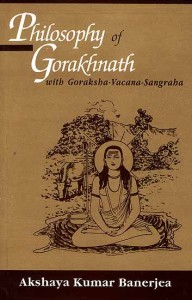
MAHAYOGI YOGACHARYA GURU GORKHNAHT JI AADESH AADESH .
BY MR . VISHAWAJEET SING JI
> HATHA YOGA AND THE MEANING OF TANTRA <
AADESH AADESH ,
MAHAYOGI ,YOGACHARYA ,GURU GORKH NATH JI
However, great Yogis such as Gorakshanath are following the system of Sadanga Yoga which has been stated by him in his book Goraksha Paddhati 1.7. This System avoids Yamaand Niyama. The justification given by those Yogis is that if you obtain mastery in meditation, your whole lifestyle gets changed in such a way, that you automatically start following the Yama and Niyamawhich are the necessary rules and individual rules of conduct respectively. These six aspects of Yoga are:
- Physical Postures
- Pranayama
- Pratyahara
- Dharana
- Dhyana
- Samadhi
2. According to the Nath Cult it is most important that the aspirant should purify his body completely. This has been stated in detail in Gheranda Samhita l.10-11-12. This is a total purification of all important and vital organs of the body such as stomach, small intestines, large intestines, nasal passage, food pipe, eyes, cars, throat, etc. After this the cult says that the aspirant is in a position to undertake all the steps of Yoga. In Patanjali’s Yoga Sutras this preparation of initial background is not mentioned.
3. The next step (in other Yoga systems) is the learning of physical postures. However, after learning all the important postures, the aspirant has to practise the most essential posture viz. Siddhasana or Vajrasana. For all the future Sadhanas this is considered to be the basic and important posture. The detailed description of this posture is given by Jnaneshvara in his sixth chapter of Jnaneshvari and also by a number of books of Nath Cult. They say that this posture is a must for all the aspirants. However, Patanjali says that you can sit in any convenient posture you like. Hence he gives the Sutra „Sthira-sukham asanam.“
4. The importance of a Guru or Master is maximum in Nath cult. Their every book or Shastra starts by remembering or bowing with great reverence and respect to the Guru Adinath or Shiva or Shankara. Jnaneshvari also starts like this by saying „Om Namoji Adya.“ This importance is not given to Guru in Patanjala Yoga Darshana.
5. The Nath cult says that the human body consists of certain most essential centres or vital points and voids (Akasha). (8) Every aspirant has to know and understand these things. They say that one who is not aware of these essential centres is not a Yogi. They are six Chakras, sixteen vital points, two Laksyas (concentration points), five voids, all situated within the human body. Such type of discussion is not found in Patanjala Yoga Darshana.
6. Nath cult says that the human body is just like a beautiful house which is having nine doors. It is formed out of five essential elements and each element is having its own deity. The nine openings are two eyes, two nostrils, two ear holes, mouth, excreta outlet, and sex organ. The deity of Earth is Brahma, of water is Vishnu, of fire is Rudra, of air is Ishvaraand of space is Sadashiva. Every aspirant has to understand these things. In Patanjala Sutras we do not find this.
7. The Nath Panth, in their various books as mentioned above, gives a detailed description of the seven chakras, their exact location in the body, their properties and functions etc. Jnaneshvara has not given the description of these chakras for the reason that he wanted to restrict his interpretation to the verses of Bhagavad-Gita. At the base of the spinal cord and at the centre of the line which connects sex organ and the excreta outlet is situated the first chakra which is known as Muladhara Chakra. Slightly above the sex centre and below the naval centre the second chakra is situated which is known as Svadhisthana Chakra. The third is situated near the naval centre and is called Manipura. The fourth one is situated near the heart centre and is known as Anahata Chakra. The fifth is situated at the throat centre and is known as Visuddha Chakra. It must be noted that all these chakras are situated in the Shushumna Nadi which passes through the spinal cord, which again passes through Vertebral Column. These are extremely subtle points and may not be structural and cannot be located by any sophisticated instrument available. These were actually ‚observed‘ and seen by the great Rishis in the stage of Samadhi. Here come the limitations of modern science. The sixth chakra is situated on the forehead and between the centre of the two eyebrows. This is known as Ajna Chakra. The seventh and the last chakra is situated in the centre of the brain in its uppermost portion. Patanjali does not mention any such thing in his Yoga Sutras.
8. According to Nath Cult there are 72.000 nerves in the body of human beings. Out of these ten Nadis are important. Out of these three are most important. They are known as Ida, Pingula and Shushumna. Ida is known as Chandra Nadi and is passing through the left side of the vertebral column. Pingula is known as Surya Nadi and is passing through the right side of the vertebral column. Shushumna Nadi is passing through the spinal cord and is known as Agni Nadi. Patanjali’s Yoga Sutras do not mention all this. He does mention a few Nadis like Kurma Nadi. But the detailed description is absent.
9. The concept of Prana has been studied in maximum details in Nath Cult. They say that in the human body there are ten different types of air or Vayus , which are known as Prana, Apana, Samana, Udana, Vyana, Naga, Kurma, Krikala, Devadatta and Dhananjaya. Each one is situated in a specific part of the body. Each one is having specific purpose and function in the body. When we take the air inside our body, it gets bifurcated into ten branches. This is just like a stream of water which starts from the Himalayan Mountains and gets bifurcated into several branches and each branch becomes a river and is given a separate name. Present medical science is not in a position to locate these ten different types of airs. However, our ancient Yogis have actually ’seen‘ these different streams of air inside our body. This type of description is not found in Patanjala Sutras.
10. When we breathe in there is a subtle sound which is known as ‚So‘ and when we breathe out there is a subtle sound which is known as ‚Ham‘. Everyone can experience this with slight practice. This sound of ‚Soham‘ is continuously going on with every breathing. In a period of one day, that is twenty-four hours, we take 21.600 breathings. That means this type of sound which is known as Mantra, is being continued in our body for that many number of times (21.600). If the aspirant observes this mentally and consciously, this becomes a great Sadhana. This Sadhana is being given very great importance in the Nath Cult. This is not found in Patanjala Yoga Sutras (PYS).
11. The most important aspect of the Yoga Sadhana of Jnaneshvara is the activation of the Kundalini Shakti. This is a Tantric Sadhana of the Nath Cult. Jnaneshvara has given a detailed account of this process in his sixth chapter. This is a practical application of the philosophy of Nath Panth. They say that the whole universe is created out of the energy of Shiva or Mahashiva or Adinatha. They call it Shakti or cosmic energy. This energy is occupying the whole universe. The smallest portion of this energy is known as Kundalini, and the energy which is present in the entire universe is known as Maha Kundalini. This energy is present in human beings in potential form (Supta Shakti). The Yogis who have experienced this energy, say that this is like a serpent and is situated at the end of the Shushumna Nadi in a coiled form, in three and a half coils, position. This also is in line with their philosophy which says „Bramhandi te Pindi“. This means that whatever exists in the universe also exists in the human being in the subtle form. Nath Cult and their great masters like Gorakshanath have devised various ways and means to activate this energy. Saint Jnaneshvara has described one method of activating this energy. This method has been stated in almost all the books of Hatha Yoga and Natha Panth and some Upanishads. The detailed description is available in the sixth chapter of Jnaneshvari.
This energy can also be activated by Mantra Yoga, Laya Yoga and Bhakti Yoga. That is why we find in Jnaneshvari all these systems of Upasana.
The ultimate stage of realisation or Moksha as per this colt is the union of Shakti with Shiva. Hence the aspirant initiated in this cult has to activate this energy and allow this energy to go through all the six chakras gradually. The place of Shiva is considered to be in the last chakra which is known as Sahasrara. In the ultimate stage, Sadhaka has to transfer this energy to this last chakra. This is supposed to be the point of union of Shakti with Shiva. One who is successful in this process, is supposed to be a great Yogi. A number of spiritual powers known as siddhis are at his disposal in that stage. A number of examples are available in the ancient Shastras about the Yogis, who were successful in obtaining this highest stage. Jnaneshvara had experienced the above union with Shiva and hence he is known as Maha Yogi. In PYS we do not find anything about Kundalini Shakti.
12. In Nath cult there is a great importance of a Gun or Master. He is given the same importance as is given to their ultimate Guru Adinath. That is why Jnaneshvara is giving maximum importance to his Guru Nivrittinath and is mentioning his name in Jnaneshvari at a number of places. Not only that, he gives the entire credit of writing this book to Nivrittinath. Their philosophy says that the aspirant can get the ultimate experience of truth or Shiva only with the continuous guidance of Guru or the Master. We find that every book of Nath Panth starts after bowing to Guru.
13. In this cult we find a mystic and esoteric act of the transfer of spiritual energy from the master to the initiated aspirant and the act is known as Shaktipata. With the tremendous powers of the master, he can activate the Kundalini energy of the disciple. This transfer, he can do by touching a specific part of his body or simply by looking at him. This transfer of energy can be done on the aspirant who is at a great distance from the master. This is a peculiar mystical act. After the transfer of energy, the aspirant experiences a number of supernatural things, a tremendous flow (of liquid) light, etc. However, those scholars who are really anxious, should go through the book Awakening of Kundalini written by Pandit Gopi Krishna, who had undergone all these experiences before about twenty-five years in Kashmir. The concept of Shaktipata is not found in PYS.
14. This cult gives a great importance to the practice of certain physical postures known as Mudras. They are useful in meditation and also in the activation of Kundalini energy and the six chakras. Hence every aspirant has to learn these Mudras. The ancient texts say that such Mudras arc twenty-five. Out of these ten are most important. With the practice of Mudras the aspirant is in a position to get rid of any and every disease and can acquire a number of supernatural powers. Because of these multiple advantages, the aspirant is taught these postures and afterhe achieves this experience, he is taught Pranayama. Mudras arc nowhere mentioned in PYS.
15. There is a difference between the Dhyana-meditation of Patanjali and Jnaneshvara. Patanjali gives the definition of Dhyana as per Sutra No. III.1 and III 2 which are as under. The aspirant has to concentrate on specific or vital part of the body or on some external point. This process is known as Dharana. When the aspirant gets success in the concentration on that particular point, for a sufficiently long time, it becomes a Dhyana. For the concentration on that particular point, the aspirant has to use his mind. However, in Kundalini Yoga, the aspirant has not to use his mind at all. He has to practise Kumbhaka, wherein the function of mind totally stops. Instead of concentrating on any particular point, the aspirant has to activate the Kundalini energy. This is a much superior way. This opinion has been confirmed by Sir John Woodroffe, in his book The Serpent Power on page No. 314 and 315 of the eleventh edition, which the learned scholars and philosophers can refer to any time.
16. Patanjali gives a broad division of Samadhi, which is termed as SamprajnataSamadhi and Asamprajnata Samadhi. However, the stage of Samadhi has been studied in details by the Nath cult and which is followedby Jnaneshvara in toto. Nath cult has categorised Samadhi in six types which are known as I ) Dhyana Yoga Samadhi, 2) Nada Yoga Samadhi, 3) Rasananda Yoga Samadhi, 4) Laya yoga Samadhi, 5) Bhakti Yoga Samadhi, and 6) Raja Yoga Samadhi. How each Samadhi can be experienced is also discussed in details. Scholars and philosophers can refer chapter seven of Gheranda Samhita which gives the entire description.
To conclude, I would like to state that both these systems of Yoga are different. The reason is obvious. Their philosophical base is altogether different. That is why the Yoga of Nath Panth accommodates Hatha Yoga, Kundalini Yoga, Mantra Yoga, and Bhakti Yoga. This Yoga Philosophy is therefore multi-dimensional. Besides the results here are very fast. This has been promised by Gorakshanath in his book. However, it is advisable that the practices of this Yoga should be undertaken under an able and experienced master.
To end the paper, I would like to quote the verse No. IV.114 from Hatha Yoga Pradipika. It says that till you are not in a position to activate the Kundalini energy, till you are not in a position to have perfect control over your pranic force, till you are not in a position to clear the path of Shushumna Nadi, all your knowledge is external, futile and full of ego. It is only an exercise of talking and nothing else. Hence he says that this is a process which has to be experienced only.
References
- Jnanesvari by Sakhare Maharaj.
- Goraksa-paddhati by Gorakshanath.
- Gheranda Samhita – Commentary by Shree Swamiji Maharaj.
- Hatha-yoga-Pradipika by Shree Swatmarama Yogi
- Patanjala Yoga (Sutra) Pradipa by Swami Omananda Tirtha.
- Patanjala Yoga Darsana by K.K. Kolhatkar
- Yoga Yajnavalkya
- Siddha-Siddhanta-Paddhati by Gorakshanath
- Shiva-Samhita – Commentary by Dr. K.R. Joshi
Dein Ayurveda Net, > svadhyaya < , Articles:
Gorakshanath the Originar of Hatha-Yoga
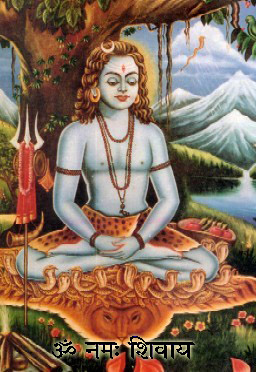
Gorakhnath or Gorakshanatha Saivism is also known as Siddha Siddhanta and Nath tradition. It was founded by Gorakshanatha (Gorakhnath) who lived about 10th century AD. He is believed to be 3rd, 4th or 5th in a line of 12 prominent teachers of this tradition, which has followers in both Buddhism and Hinduism.
He was said to be a disciple of Matsyendranatha who was from in Nepal. Followers of this tradition believe that knowledge of this tradition was received by Matsyendranath directly from Siva himself. Gorakshanatha is credited with such works as Siddha Siddhanta Paddhathi and Viveka Martanda. He composed them in Hindi. He also created 12 monastic orders across Northern India in an effort to preserve the Adinatha tradition.
Other important works of this tradition are Hatha Yoga Pradipika, Gheranda Samhita, Siva Samhita and Jnanamrita.
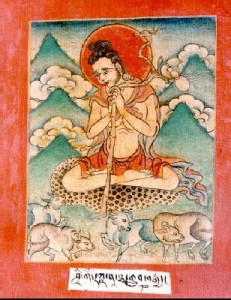
Also known as Gorakhnath – regarded as the originator of hatha yoga!
The school was predominantly ascetic and adapted many practices of the Pasupatha tradition and the Adinatha Tradition in contrast to the Nandinatha tradition followed in the south. Although it is a tantric tradition, it differs from many left-handed (vamachara) schools of tantra with its uncompromising emphasis on the practice of brahmacharya or celibacy and its stand against the use of sexual energy in yogic practices. In the past this tradition enjoyed some Muslim following in the northern India and some of them even became heads of monasteries.
The Gorakshanatha tradition brought to light many secrets of hatha yoga, kundalini yoga and samadhi and contributed to their present day popularity. Members of this tradition also dabble in occult sciences and siddhis or super natural powers.
Followers of this tradition believe that it would be possible through yogic practices to prolong human life and become immortal in the physical body (kayasiddhi). They believe that through the practice of hathayoga it is possible to channel breath energy through a web of nerves or nadis and acquire occult powers as well as achieve liberation. No one knows for sure what these practices are except those who have been initiated into them. Some followers of this tradition claim to have seen or interacted with beings who are several hundreds of years old. There are claims that Gorakshanatha, the original founder of the school, is still alive and active in our earth plane but does not appear in public.
Followers of the tradition believe that Siva is the material and efficient cause of creation and that after liberation the jivas would return to Siva, like bubbles in water. Oneness with Siva can be experienced by serious practitioners of yoga in a deep state of samadhi. Once the state of samadhi is reached, an individual would remain forever established in transcendental consciousness even while engaged in the mundane affairs of the outside world.
The tradition is still active in many parts of India and abroad and its followers range from mendicants and street magicians to the most obscure ascetics living in the Himalayas.
The popularity of hatha yoga, pranayama, kundalini yoga, holistic medicine, astrology and ayurveda in the modern world can be attributed to a great extent to this tradition.
The International Nath Order is draws its inspiration from the ancient Natha tradition, although it strives to propagate its teachings mostly outside India.
It was founded in 1978 by Guru Mahendranath in order to share the knowledge of his own spiritual awakening and also the wisdom of the ancient tantric schools of Hinduism and Buddhism.
Yoga, Literatur, eine Übersicht
Die klassische Literatur des Yoga – Übersicht
Die Urelemente des Yoga entstammen frühesten Epochen der Menschheitsentwicklung. Über yogaähnliche Praktiken geben die ältesten Teile der Veden Auskunft. Sie erwähnen und beschreiben asketische Methoden und Verzückungserlebnisse von noch wenig differenzierter Natur. Es sind vor allem zwei Texte, die Aussagen über diese frühe Stufe der Yogaentwicklung machen: der Rigveda und das Vratya-Buch des Atharvaveda.
Das Yoga-Schrifttum der nachfolgenden Zeiten ist mannigfaltig. Die yogische Idee findet ihren Ausdruck in allen Gattungen der indischen Literatur. Der Yoga erfährt sowohl in den Epen als auch in den Puranas, Agamas und Shastras eine ausführliche Behandlung. Eine kleine Auswahl der wichtigsten Yoga-Schriften soll nachfolgend gegeben werden.
